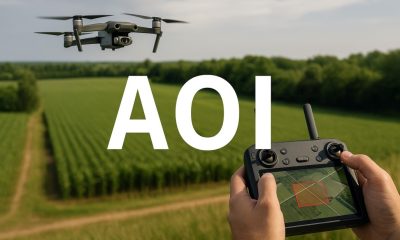Canadian Drone Regulations
Canadian Drone Regulations – Introduction
By
Jacob StonerTable Of Contents

Introduction to Canadian Drone Regulations
Drones, also known as Unmanned Aerial Vehicles (UAVs), have revolutionized numerous sectors, including photography, agriculture, logistics, emergency services, and entertainment. The rise in drone usage has brought about significant advancements, making tasks easier, safer, and more efficient. In Canada, the adoption of drones is rapidly increasing, reflecting a global trend where these versatile devices are becoming integral to both personal and professional activities.
As drones become more prevalent, ensuring their safe and responsible use is critical. The Canadian government, recognizing both the opportunities and challenges presented by drone technology, has established comprehensive regulations to manage their operation. These regulations aim to safeguard public safety, protect privacy, and ensure the security of Canadian airspace.
Purpose
The purpose of this guide is to provide a thorough understanding of the regulations that govern drone operations in Canada. Whether you are a hobbyist enjoying recreational flying, a professional using drones for commercial purposes, or involved in advanced operations, this guide will help you navigate the complex regulatory landscape.
Key Objectives:
- Safety: Ensuring that drone operations do not pose risks to people, property, or other aircraft.
- Compliance: Helping drone operators comply with Transport Canada’s rules to avoid fines and legal issues.
- Awareness: Educating operators on their responsibilities and the importance of adhering to regulations.
- Innovation: Encouraging the responsible use of drones to foster innovation and technological advancement in various sectors.
This guide is structured to provide detailed information on all aspects of drone regulations in Canada, from basic rules to advanced operations. It aims to be a comprehensive resource for anyone involved in drone activities, offering practical advice, regulatory details, and useful tips to ensure safe and lawful flying.
The Evolution of Drone Regulations in Canada
The development of drone regulations in Canada has been an ongoing process, shaped by technological advancements and increasing usage. Initially, drones were largely unregulated, with minimal oversight. However, as their popularity grew, so did the need for a robust regulatory framework to address safety concerns and operational challenges.
In response, Transport Canada introduced a series of regulations, starting with basic guidelines for recreational use and progressively moving towards more detailed rules for commercial and advanced operations. The current regulatory framework reflects years of consultation with stakeholders, including drone operators, industry experts, and the public, ensuring a balanced approach that promotes safety without stifling innovation.
Importance of Adhering to Drone Regulations
Adhering to drone regulations is not just a legal requirement but a critical component of responsible drone ownership and operation. Compliance ensures that:
- Safety is maintained: Preventing accidents and incidents that could harm people or property.
- Privacy is respected: Protecting individuals’ privacy rights and avoiding unauthorized surveillance.
- Security is upheld: Ensuring drones do not pose threats to national security or interfere with critical infrastructure.
- Innovation thrives: Creating a safe and predictable environment for technological advancements and commercial opportunities.
By following the regulations outlined in this guide, drone operators can contribute to a safer, more secure, and innovative aerial ecosystem in Canada.
Who Should Use This Guide?
This guide is designed for a diverse audience, including:
- Recreational Users: Individuals flying drones for fun or personal interest.
- Commercial Operators: Businesses and professionals using drones for various commercial purposes.
- Advanced Users: Operators involved in complex and high-risk operations requiring special permissions.
- Regulatory Bodies and Law Enforcement: Authorities responsible for monitoring and enforcing drone regulations.
Regardless of your level of experience or the purpose of your drone activities, this guide provides the essential information needed to operate within the legal framework and ensure safe, responsible drone usage in Canada.
To Learn more about acronyms used in this article visit our Drones Acronym Page.
As the CEO of Flyeye.io, Jacob Stoner spearheads the company's operations with his extensive expertise in the drone industry. He is a licensed commercial drone operator in Canada, where he frequently conducts drone inspections. Jacob is a highly respected figure within his local drone community, where he indulges his passion for videography during his leisure time. Above all, Jacob's keen interest lies in the potential societal impact of drone technology advancements.











